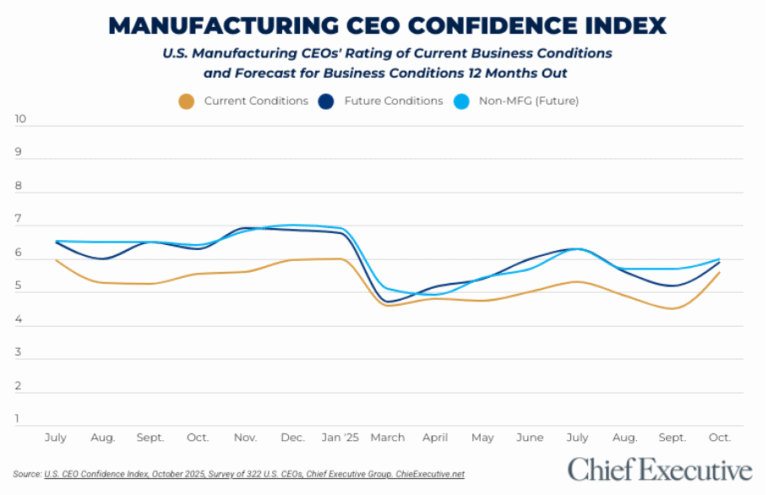


If you’re a CEO right now, your position depends less on the vision you’ve outlined and more on the results you’ve produced in the last ninety days. In 2024, over 200 chief executives were replaced, marking a 13 percent increase in CEO turnover from 2023, and well over the six-year average. Boards are moving faster, driven by market volatility, activist pressure and a growing belief that leadership changes are the fastest way to unlock value.
Simultaneously, the window for delivering on strategy is narrowing. Expectations around margin expansion, capital efficiency and operational control have tightened, and patience for long-term transformation has worn thin. Execution is being treated as a leading indicator of leadership quality. As a CEO, if you’re not quantifying progress and eliminating drag in real time, the conversation around your role may already be happening without you.
The era of fast growth based on big promises and easy capital is coming to an end. Investors are no longer satisfied with ambitious strategies that stretch out over years. They want results they can measure now. If you focus only on long-term vision without clear progress, you’re putting your credibility at risk. Boards are beginning to treat ideas without follow-through as a weakness rather than a strength, which can lead to further unprecedented numbers of CEO replacement.
This shift is already playing out in major companies. Intel struggled to keep up in the AI market, and leadership was held accountable. Peloton faced major challenges after the pandemic, and the board lost confidence in the company’s ability to recover. In both cases, the message was clear. Boards want leaders who can act quickly, manage uncertainty and prove their impact in a changing business climate.
Across all sectors, this is becoming the new standard. Boards are looking for leaders who understand operations, know how to manage costs and can react when the market changes. If you want to stay ahead, you need to bring working knowledge of finance, supply chain and data-driven decision-making into every conversation.
The modern executive team is changing largely because boards are under more pressure to perform. Leading in this environment means being clear, consistent and focused on outcomes. It is not enough to inspire people. You need to build a team that can deliver on plans and adjust in real time.
Financial and operational skills are no longer optional. As CEO, you must be able to connect financial decisions directly to business execution. Your CFO and COO must be able to reduce costs, support growth and move quickly when conditions shift. If they cannot, you will be expected to answer for the gaps.
You also need to rely on data to guide decisions. CEOs who use real-time performance information can see risks earlier, act faster and compete more effectively. Leading without strong data is becoming harder to defend when so many tools now exist to support better judgment.
The CEOs who are succeeding today are the ones who understand multiple parts of the business. They have managed profit and loss, led large-scale change and worked across finance, operations and revenue. Boards no longer see this kind of background as optional. They see it as essential.
Many companies still choose leaders based on presence or charm, leading to a “visionary trap.” However, those qualities alone will not carry a business forward. If you’re building a leadership team or considering your own next move, focus on who can produce results. That is what matters most now, and it is what your board expects from you.
In high-stakes leadership roles, the gap between articulating a plan and delivering on it can define the success or failure of your tenure. Yet too many hiring decisions still lean toward candidates who communicate well rather than those who have a record of implementation.
As CEO, you set the standard. Elevate your organizational hiring lens to focus less on charisma and more on evidence. That means scrutinizing past performance through hard numbers. Look for consistent revenue growth, disciplined cost control, operational improvements and the ability to scale. Go beyond polished interviews and press for specifics. Then, ask how strategy became action, how resistance was managed and how results were measured. Remember, leadership isn’t about how well someone talks about change, but about how well they lead others through it.
If your organization still relies heavily on external hires to fill critical roles, you’re exposing yourself to unnecessary disruption. Cultural misalignment, long onboarding curves and mismatched expectations can all erode momentum. To maintain continuity and retain strategic control, prioritize the development of internal talent with the right balance of vision and operational strength.
Start by creating structured opportunities for high-potential leaders to rotate through finance, operations and revenue functions. Give them real ownership in different parts of the business. The goal is to build true readiness. When transitions happen, and they will, you need leaders who can step in without hesitation and execute from day one.
Filling executive roles that shape your company’s direction demands more than a compelling resume or strong interview performance. Yet many organizations rely too heavily on internal networks or standard recruitment processes, which can limit visibility into top-tier talent with proven executional depth.
A more strategic approach combines internal evaluation with external perspective. That might mean tapping into specialized partners that help you avoid blind spots by utilizing data-driven assessment tools and broader market insights to challenge assumptions, remove bias and uncover hidden risks. The ultimate goal is to de-risk critical hires by aligning experience, capability and cultural fit—especially in roles where execution is paramount.
Your hiring strategy should reflect the high stakes of leadership today. Building a team that can deliver—and adapt in real time—requires a process that’s as rigorous and dynamic as the environment you’re leading in.
Ultimately, execution is the filter boards are using to assess leadership at every level. If you want to lead in this environment, or build a team that can, stop treating it as a side trait and start treating it as the core requirement.



0

1:00 - 5:00 pm
Over 70% of Executives Surveyed Agree: Many Strategic Planning Efforts Lack Systematic Approach Tips for Enhancing Your Strategic Planning Process
Executives expressed frustration with their current strategic planning process. Issues include:
Steve Rutan and Denise Harrison have put together an afternoon workshop that will provide the tools you need to address these concerns. They have worked with hundreds of executives to develop a systematic approach that will enable your team to make better decisions during strategic planning. Steve and Denise will walk you through exercises for prioritizing your lists and steps that will reset and reinvigorate your process. This will be a hands-on workshop that will enable you to think about your business as you use the tools that are being presented. If you are ready for a Strategic Planning tune-up, select this workshop in your registration form. The additional fee of $695 will be added to your total.

2:00 - 5:00 pm
Female leaders face the same issues all leaders do, but they often face additional challenges too. In this peer session, we will facilitate a discussion of best practices and how to overcome common barriers to help women leaders be more effective within and outside their organizations.
Limited space available.

10:30 - 5:00 pm
General’s Retreat at Hermitage Golf Course
Sponsored by UBS
General’s Retreat, built in 1986 with architect Gary Roger Baird, has been voted the “Best Golf Course in Nashville” and is a “must play” when visiting the Nashville, Tennessee area. With the beautiful setting along the Cumberland River, golfers of all capabilities will thoroughly enjoy the golf, scenery and hospitality.
The golf outing fee includes transportation to and from the hotel, greens/cart fees, use of practice facilities, and boxed lunch. The bus will leave the hotel at 10:30 am for a noon shotgun start and return to the hotel after the cocktail reception following the completion of the round.